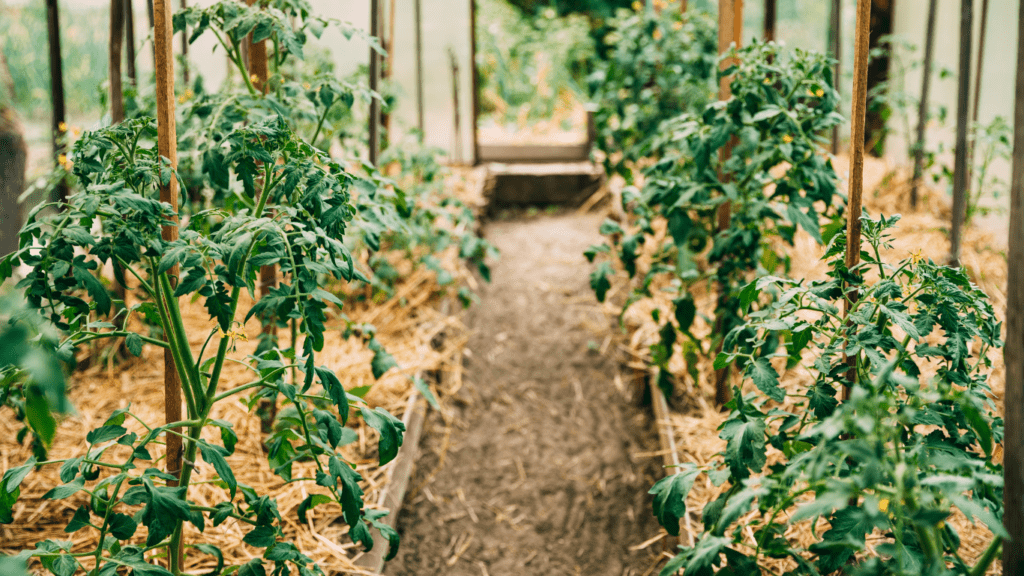Benefits of Growing Your Own Organic Garden
Growing your own organic garden offers numerous benefits, from enhancing health to preserving the environment, while saving money over time.
Health and Environmental Advantages
Organic gardening eliminates the use of synthetic pesticides and fertilizers, reducing exposure to harmful chemicals. Organic produce, grown without chemicals, tends to be fresher and more nutritious than conventionally grown produce.
Homegrown vegetables and herbs, picked at peak ripeness, retain higher nutrient levels.
Engaging in gardening promotes physical health through moderate exercise and improves mental wellbeing by reducing stress.
Studies by the CDC show that gardening activities can burn over 300 calories per hour.
Environmentally, organic gardening enriches soil biodiversity, promotes water conservation, and reduces greenhouse gas emissions. Gardeners practicing organic methods contribute to a balanced ecosystem, encouraging beneficial insects, such as bees and ladybugs, that pollinate plants and control pests.
Cost Savings Over Time
Initial investments in seeds, soil amendments, and gardening tools are offset by long-term savings. A packet of organic seeds, costing around $2-$5, can yield pounds of produce, significantly reducing grocery bills.
Over time, composting kitchen scraps and garden waste reduces the need for commercial fertilizers. Rainwater harvesting systems decrease water costs, and self-sufficiency in food production provides a buffer against inflation and market fluctuations.
According to a report by the National Gardening Association, the average gardener can save about $600 annually on grocery expenses.
Growing your own organic garden not only offers personal health and environmental benefits but also provides significant financial savings, making it a worthwhile endeavor.
Planning Your Organic Garden

Careful planning ensures a successful organic garden. Consider essential elements like location and soil quality to maximize your garden’s productivity.
Choosing the Right Location
Optimal location maximizes sunlight exposure and drainage. Pick a spot that gets 6-8 hours of direct sunlight daily. Ensure the area has good drainage to prevent waterlogging, which can damage plant roots.
Avoid locations near large trees as their roots can compete for nutrients and water.
Soil Preparation and Management
Healthy soil is key to a thriving organic garden. Begin by testing soil pH, aiming for a range between 6.0 and 7.0 suitable for most plants. Amend the soil with organic matter like compost or aged manure to improve texture and fertility.
Implement crop rotation to prevent nutrient depletion and reduce pest and disease outbreaks. Mulch around plants to conserve moisture, suppress weeds, and enhance soil structure over time.
Plant Selection and Planting Techniques
Choosing the right plants and using effective planting techniques boosts your organic garden’s success.
Best Plants for Organic Gardens
Select plants suited for organic growth. Herbs like basil, thyme, and rosemary thrive without chemicals. Leafy greens such as spinach, kale, and lettuce grow quickly and are less prone to pests.
Root vegetables including carrots, beets, and radishes require minimal upkeep. Fruits like tomatoes, strawberries, and blueberries are resilient when grown organically. Heirloom varieties often adapt well to organic methods, offering robust flavors and resistance to local pests.
Timing and Planting Strategies
Planting at the right time ensures healthy growth. Cool-season crops like peas, broccoli, and cabbage should be planted in early spring or late fall. Warm-season crops like peppers, cucumbers, and beans require late spring or early summer planting.
Use succession planting to maximize yields: sow new seeds as soon as one crop finishes. Companion planting pairs beneficial plants; for example, planting marigolds with tomatoes repels pests.
Ensure proper spacing based on plant requirements to avoid overcrowding and allow optimal growth.
Maintaining Your Organic Garden
Maintaining your organic garden requires consistent care and attention. Using natural methods ensures plants remain healthy and productive.
Natural Pest Control Methods
Organic gardens often attract pests, but natural methods can manage them effectively:
- Beneficial Insects: Introduce ladybugs, lacewings, and predatory mites. They feed on common garden pests like aphids and caterpillars.
- Companion Planting: Use plants like marigolds, basil, and garlic. These plants repel pests and enhance the growth of neighboring crops.
- Homemade Sprays: Create solutions using ingredients like neem oil, soap, and garlic. Sprays can deter pests without harming the environment.
- Physical Barriers: Use row covers or netting. These barriers prevent pests from reaching your plants while still allowing sunlight and rain.
- Deep Watering: Water deeply but infrequently. This encourages roots to grow deeper and makes plants more drought-resistant.
- Mulching: Apply organic mulch like straw, leaves, or compost. Mulch retains soil moisture, suppresses weeds, and enhances soil quality.
- Drip Irrigation: Install a drip irrigation system. It delivers water directly to plant roots, reducing waste and preventing disease.
- Hand Weeding: Remove weeds by hand. This method is gentle on plants and effective in maintaining a weed-free garden.
- Hoeing: Use a hoe to chop weeds at the soil surface. Regular hoeing prevents weeds from establishing deep roots.
Harvesting and Using Your Produce
Harvesting your organic garden’s produce marks a fulfilling moment. It rewards your hard work with fresh, delicious, and nutritious food.
Tips for Efficient Harvesting
Efficient harvesting ensures your garden produces high-quality yields.
- Harvest Timing: Pick vegetables (like tomatoes and cucumbers) and fruits (like berries and melons) at peak ripeness, usually in the early morning, when temperatures are cooler.
- Use Proper Tools: Employ sharp, clean pruning shears or knives for harvesting to prevent damage to plants and produce.
- Regular Monitoring: Check your garden daily—especially during peak harvest times—to prevent overripe or spoiled produce.
- Gentle Handling: Minimize bruising by gently placing produce (like zucchinis and peppers) in containers instead of piling them up.
Ideas for Using and Preserving Organic Produce
Maximize the benefits of your organic garden by using and preserving your harvest efficiently.
- Fresh Consumption: Immediately enjoy produce (like lettuce and carrots) to take advantage of peak flavors and nutrients.
- Canning: Preserve the abundance of tomatoes and beans by canning them, following proper sterilization protocols.
- Freezing: Freeze herbs, berries, and peas by blanching them first to retain color and nutrients.
- Drying: Dehydrate herbs (like basil and oregano) and fruits (like apple slices) for long-term use.
- Fermentation: Create fermented foods (like pickles and sauerkraut) to enjoy unique flavors and health benefits.
By following these harvesting and preserving tips, you’ll enjoy your garden’s bounty throughout the year.


 is a committed writer and environmental advocate at Eco Elegance Technique, specializing in sustainable practices, health, and wellness. With a background in environmental studies, Peter focuses on providing readers with practical advice on integrating eco-friendly habits into their daily routines. His work aims to inspire a deeper connection between personal well-being and environmental responsibility, making sustainability accessible and actionable for everyone.
is a committed writer and environmental advocate at Eco Elegance Technique, specializing in sustainable practices, health, and wellness. With a background in environmental studies, Peter focuses on providing readers with practical advice on integrating eco-friendly habits into their daily routines. His work aims to inspire a deeper connection between personal well-being and environmental responsibility, making sustainability accessible and actionable for everyone.
